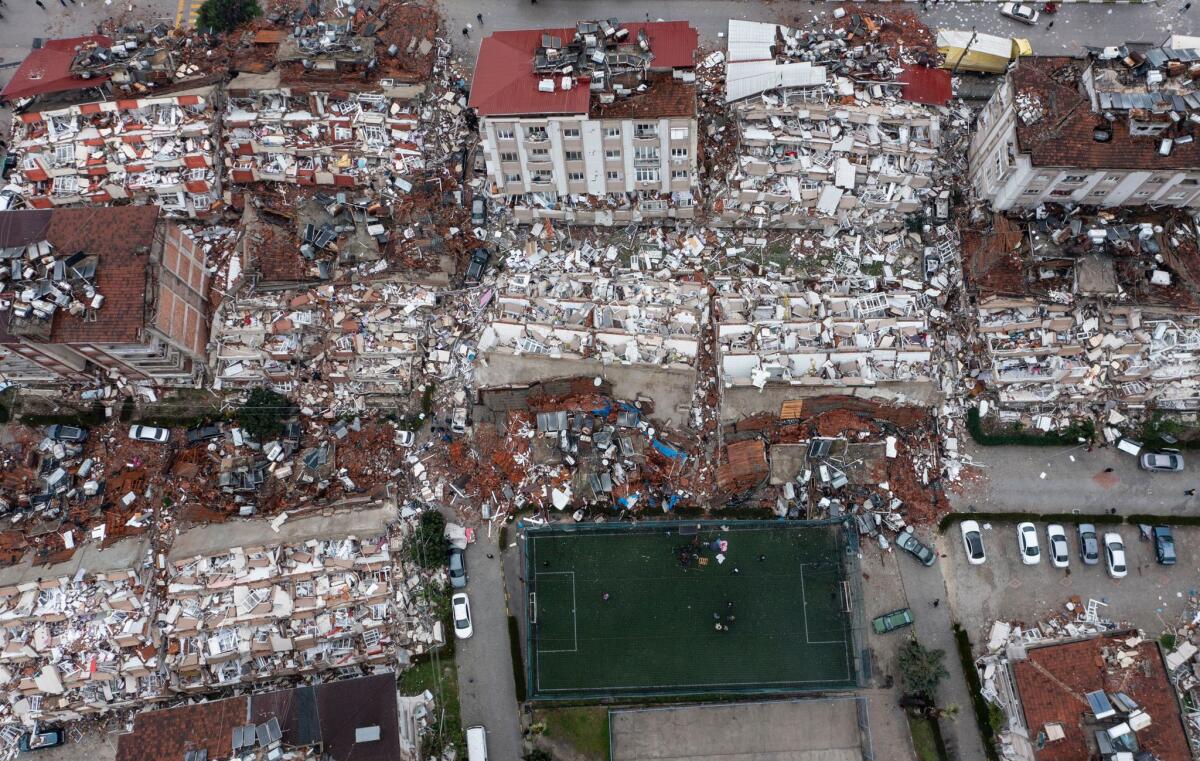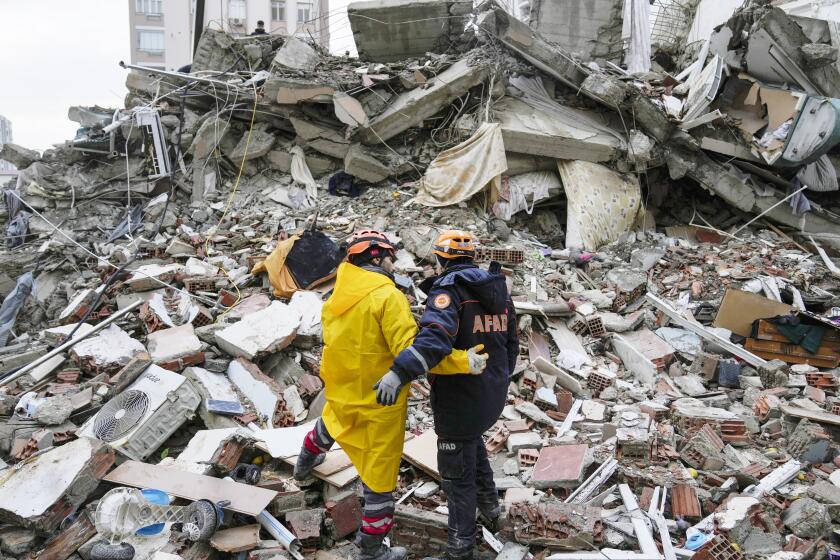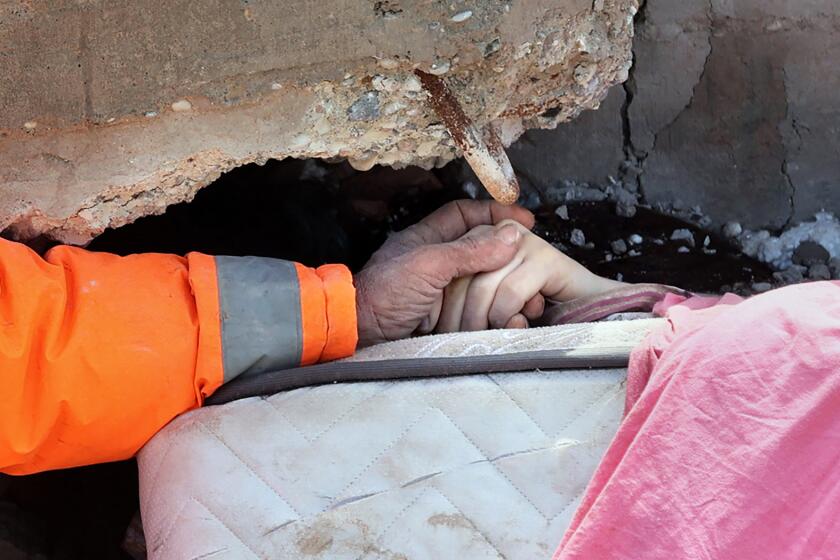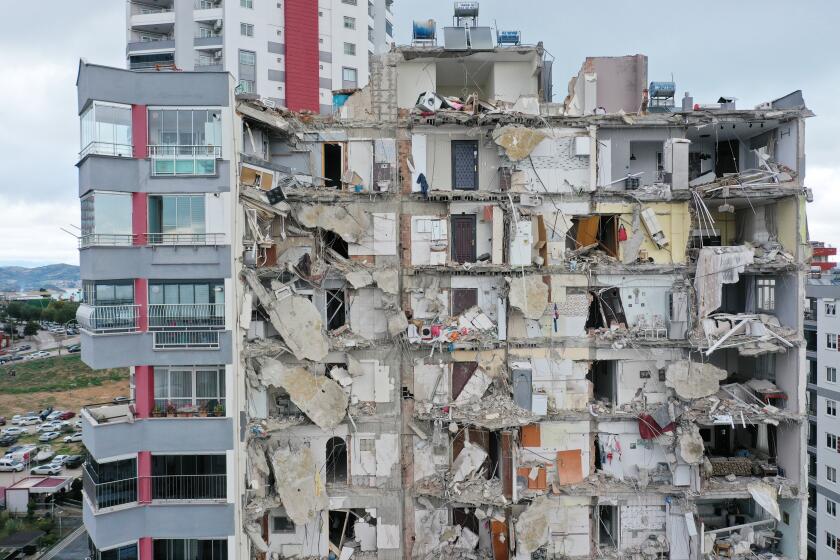Why some huge earthquakes cause great destruction while others do little damage

The biggest earthquake to hit the U.S. since the 1960s was an 8.2 temblor near the Alaskan Peninsula on July 28, 2021.
If you are struggling to recall the horrifying details, it’s because there weren’t any. No one was killed or injured in the Chignik earthquake, the seventh-largest in U.S. history. Not a single building fell. A post-quake inspection of Perryville, the closest town to the epicenter, revealed nothing more troubling than a few drywall cracks.
There will be no such sighs of relief in the areas devastated by the magnitude 7.8 earthquake that struck southern Turkey early Monday. The quake left more than 4,000 people dead, uncounted more injured and tens of thousands homeless as buildings collapsed around them.
The San Andreas fault is capable of magnitude 7.8 earthquakes. Two have occurred twice in recent times: the 1906 San Francisco earthquake and one in 1857 in Southern California.
Magnitude alone does not determine the full extent of an earthquake’s damage. The amount of death and destruction any individual quake brings depends on multiple factors, each of which can make the difference between life and death for those on the ground.
Location, location, location
In the simplest and most obvious terms, the closer an earthquake is to a human settlement, the more damage it wreaks.
“It’s kind of the real estate thing: Location, location, location,” said Susan Hough, a seismologist with the U.S. Geological Survey in Pasadena. “I mean, magnitude matters. If it’s a [magnitude] 3 versus an 8, that [makes] a difference. ... But for the most part, the further you get away from the fault that’s moving, the more the energy spreads out, and it just loses its really severe punch.”
The Chignik earthquake erupted about 20 miles beneath the seafloor off the Alaska Peninsula. It was deep enough that its energy had mostly dissipated by the time it reached the closest human settlement of Perryville, a village roughly 65 miles away with a population of about 100 people.
The Turkey earthquake has no such luck of geography. Like California’s San Andreas fault, the East Anatolian fault — the seam along which this earthquake ruptured — runs under heavily populated areas.
Even worse, Monday’s quake occurred relatively close to the surface, which translates to much stronger shaking on the ground. The main quake erupted about 11 miles (18 kilometers) below the surface, and a major 7.5 aftershock was even shallower, at 6 miles (10 km).
The soil
An earthquake hits differently depending on the makeup of the ground you’re standing on. Structures built on softer, sedimentary soils — like those found in the Los Angeles Basin and in south Turkey — are going to experience more shaking than those anchored on firmer ground.
“It’s basically tofu versus rock,” said An Yin, a professor of geology at UCLA. “If you build a house drilled into solid rock versus a house ... drilled into tofu, which one are you going to trust? Of course the rocks.”
Unshaken is the L.A. Times newsletter guide to earthquake readiness and resilience. Sign up for this six-week course to get you ready for a major earthquake in California.
If there’s enough moisture present in the soil, sedimentary ground is also prone to liquefaction. That’s when the combination of intense pressure and shaking causes sedimentary rock to lose its shape and behave more like a liquid than a solid. The soils of Mexico City are particularly prone to liquefaction, which is why earthquakes there are so devastating. So is the region where the Turkey earthquake hit.
The built environment
“We in the profession have a saying, which is that earthquakes don’t kill people — buildings do. This is what we’re really seeing played out here” in Turkey and Syria, said William Ellsworth, a former chief scientist of the USGS Earthquake Hazards Program and now a professor of geophysics at Stanford University.
A 7.4 quake in eastern Turkey in 1999 that killed 17,000 people prompted a drive for stricter earthquake building codes that many new developments — especially in major cities — have followed. But most buildings that went up before the new rules took effect haven’t been retrofitted to meet them, leaving many densely packed neighborhoods at risk for the kind of disaster unfolding now.

“Turkey has very good earthquake codes. In many ways, they’re as strong as those that we have in California. But if buildings weren’t built to modern codes, they’re vulnerable,” Ellsworth said. “Looking at the pictures online, it’s just horrendous to see one apartment building after another that’s just completely pancaked.”
Timing is everything
Even the time of day or year when an earthquake hits can make a major difference in someone surviving the temblor.
“Dead of night is not a good time in general for earthquakes,” Hough said. The initial shock in Turkey struck around 4:15 a.m. local time, when most residents of affected areas were indoors and asleep. Early-morning quakes often lead to higher casualty counts when crowded buildings collapse.
The death toll is in the thousands after a magnitude 7.8 earthquake, followed by a magnitude 7.5 quake, struck southern Turkey.
And while there is never a good time of year for a massive earthquake, the middle of winter might be the worst. Heavy snow and rain slowed rescue workers attempting to travel to the hard-hit Kahramanmaras province, and those able to reach the worst-affected areas labored in cold rain. Nighttime temperatures in the area are well below freezing, making both survival and rescue all the more difficult.
The aftermath
The greatest casualties in an earthquake are often the result of “secondary effects,” or disasters triggered by the initial quake. In the 1906 San Francisco earthquake, it was the fires that ravaged the city when gas and water mains broke. In the 2004 Indian Ocean earthquake, it was the resulting tsunami that swept ashore and killed nearly 228,000 people.
In the Turkey earthquake, fires have been reported at the Iskenderun port on the Mediterranean and along a gas pipeline. The USGS said that the region is also at significant risk of landslides.
Such a quake would be ‘so powerful that it causes widespread damage and consequently affects lives and livelihoods of all southern Californians,’ a report says.











